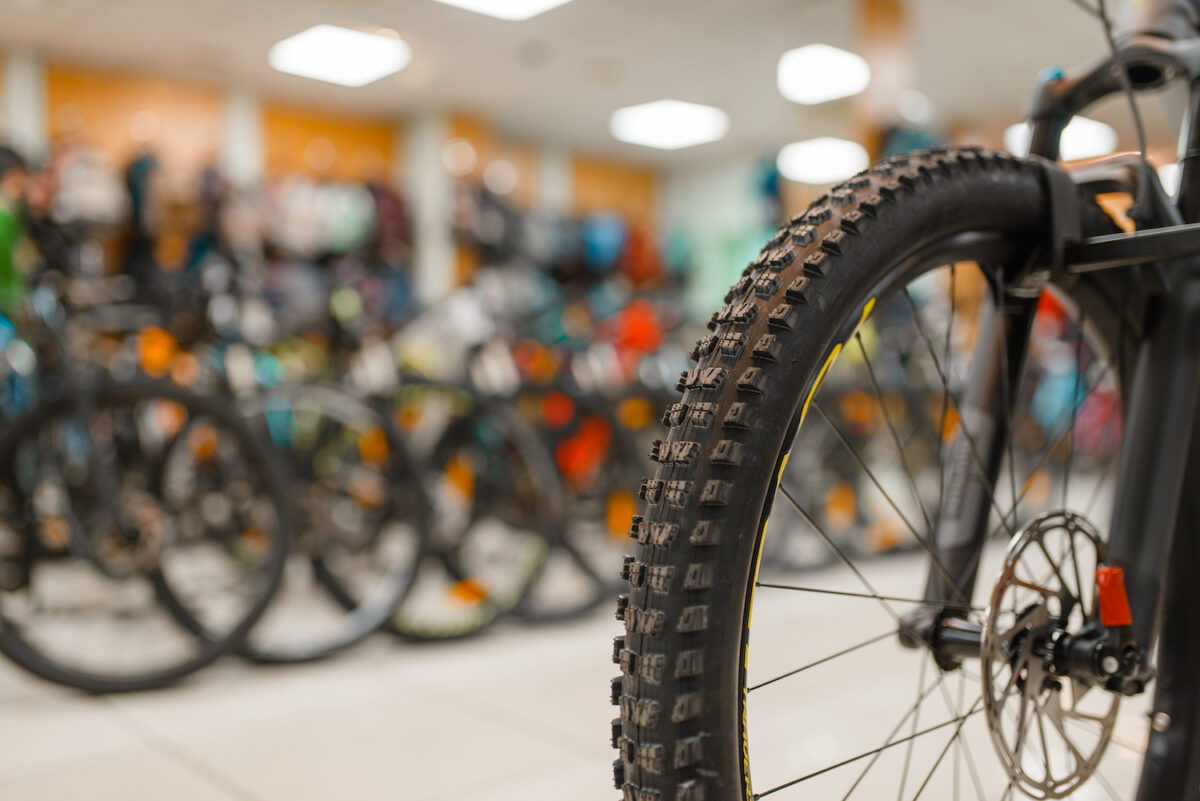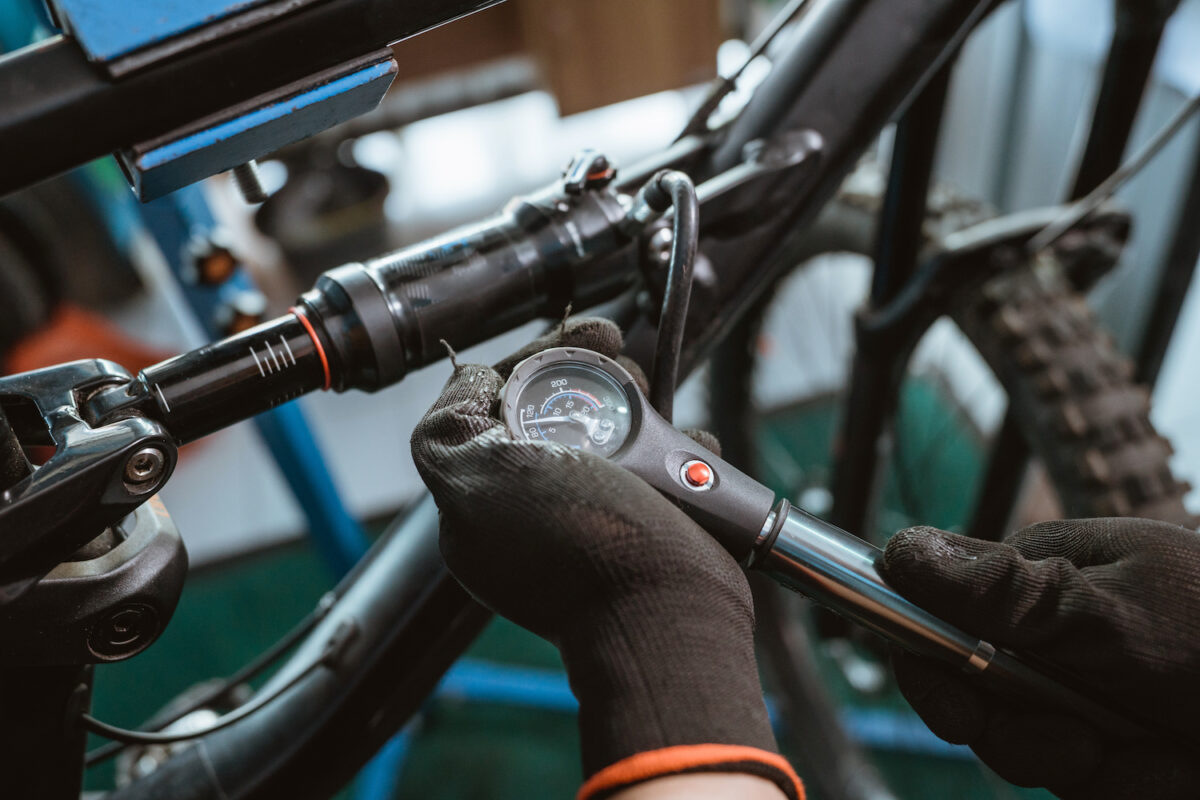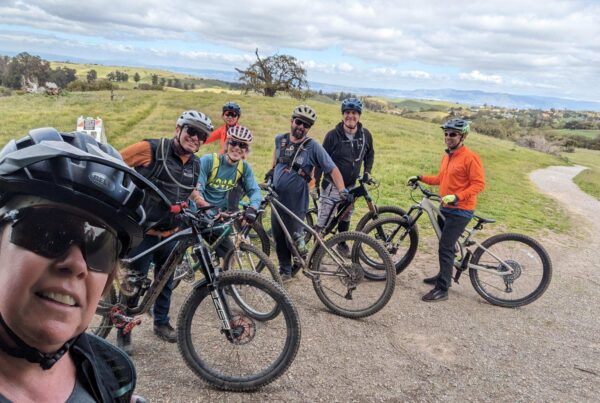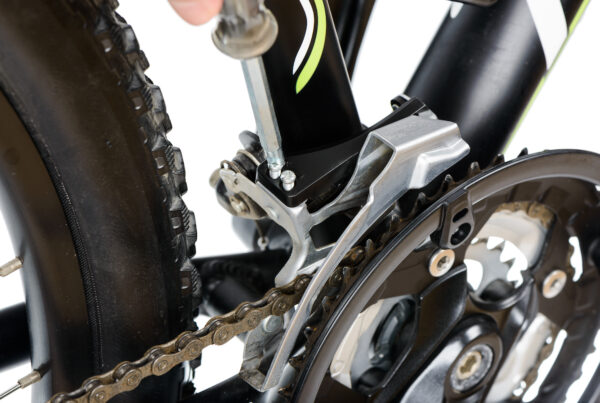You’ve had your bike for a few years, and while you may love the frame, its accessories are starting to look a little worse for wear. Should you just buy an entire new bike or upgrade components on it? Here’s a quick scoop on when to buy a new model or do mountain bike upgrades and in what order.
When To Buy New Versus Upgrade
Mountain bikes especially on the upper end of the spectrum are as expensive as a car. Similar to a vehicle, if your current bike doesn’t have modern geometry or technology, it’s high time to invest in a newer bike rather than spend the money to try to make it fit the ideal. This could be going from a 27.5 inch tire diameter to a 29 inch tire, which your current frame most likely won’t let you. Or it’s as simple as the bike doesn’t have disc brakes. On the other hand, if the frame is still in good shape (i.e. not damaged), has modern geometry, and rides comfortably, then upgrading key parts to help up your ride is a great idea.
Comfort First
 Dialing in your cockpit is crucial. You shouldn’t be in pain during or after a ride. If your neck, bum, or shoulders hurt, it could be a simple fix by getting a wider set of handlebars or a new stem. The main points of contact between you and the bike are crucial. A new set of pedals can do wonders as well!
Dialing in your cockpit is crucial. You shouldn’t be in pain during or after a ride. If your neck, bum, or shoulders hurt, it could be a simple fix by getting a wider set of handlebars or a new stem. The main points of contact between you and the bike are crucial. A new set of pedals can do wonders as well!
Lots Of Go… Needs Lots Of Whoa
One of the latest trends in mountain biking is the idea of “over braking” your bike. This is when you upgrade your brakes with larger rotors. The concept is putting downhill brakes on your trail or enduro bike. The weight to stopping power will give you that extra bit of confidence you need when tackling downhill sections.
It’s All About The Wheels
 This is when you see the costs begin to ratchet up. When you upgrade your wheel set, you will typically improve rolling resistance, possibly lose some weight, and improve your hub’s engagement. What we mean by engagement is how long does it take for the bike to “engage” when you pedal forward. Most stock hubs have a large dead zone. In addition, new wheels can give you sense of acceleration and overall energy efficiency and endurance while out riding.
This is when you see the costs begin to ratchet up. When you upgrade your wheel set, you will typically improve rolling resistance, possibly lose some weight, and improve your hub’s engagement. What we mean by engagement is how long does it take for the bike to “engage” when you pedal forward. Most stock hubs have a large dead zone. In addition, new wheels can give you sense of acceleration and overall energy efficiency and endurance while out riding.
What You Sittin’ On – Are They Still Good?
Speaking of what you’re rolling on… have you checked your tires lately? Take a close look at your side knobs to see if there is any deterioration. If you see the knobs starting to splinter off, you’re losing traction in the turns. Another symptom to look for is if you can see threads through the sidewall. Either of these means it’s time to pick up a new set of tires.
Suspension
 Last but not least, suspension. Shocks and suspension have improved leaps and bounds as to what was available just a few years ago. What was considered high-end six or seven years ago wouldn’t even compete with what’s available on current bikes today. Even if you don’t upgrade the suspension, consider bringing it in to get tuned. For example, you can make the volume chamber smaller, thus making it more progressive to bottom out. It only changes the last 40% of your travel, but it will make a HUGE difference.
Last but not least, suspension. Shocks and suspension have improved leaps and bounds as to what was available just a few years ago. What was considered high-end six or seven years ago wouldn’t even compete with what’s available on current bikes today. Even if you don’t upgrade the suspension, consider bringing it in to get tuned. For example, you can make the volume chamber smaller, thus making it more progressive to bottom out. It only changes the last 40% of your travel, but it will make a HUGE difference.
Word Of Warning
If you do go the upgrade route, be extra cautious on upgrading your fork or wheels especially if your bike is older than five years. What you think you can use on a newer bike may not work due to change in hub spacing and fork types being built.




